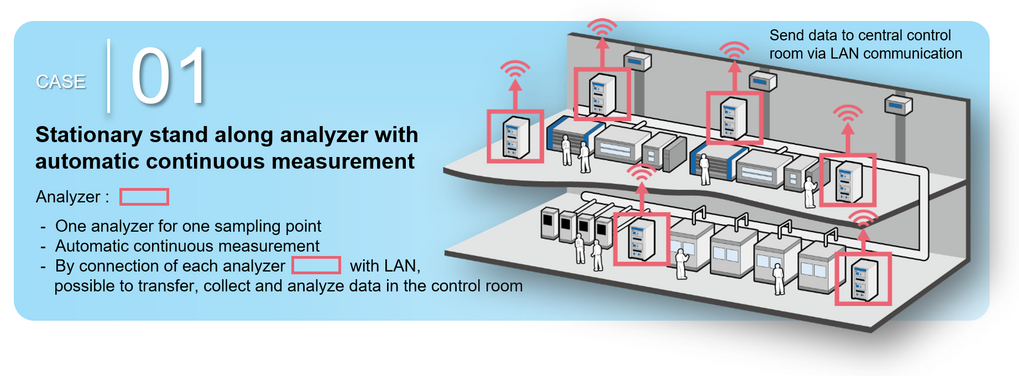
Airborne molecular contaminants (AMCs) is contamination of the air existing in the molecular form and playing a critical role in the product quality of modern semiconductor fabrication even when existing at extremely low ppb level concentrations.
AMCs are classified into categories such as Inorganic Acids, Organic Acids, and Sulfurous. Among all, hydrogen sulfide (H2S) causes such negative impacts as product characteristic loss due to its reduction power when existing in gaseous form and metal surface corrosion when existing in form of liquid. The H2S contamination source is widely spread. Examples include volcanic activity and eruption, operation of heavy machinery that uses diesel as fuel increasing AMC concentration in the cleanroom through make-up air intake. Therefore, chemical filters are widely used to remove H2S before entering cleanroom, and the contamination level is conventionally checked by Ion Chromatography.
Since, H2S has low solubility in the water under neutral to acidic conditions, and its dissociation is also low, it is difficult to detect electrical conductivity by ion chromatography. Therefore, an alkaline and hydrogen peroxide solutions are commonly mixed and used as collection liquid.
However, there are often bias (human errors) caused by the difference in the mixing ratios depending on the personnel, end up an unstable analysis results. In addition, since each analysis takes time (several days for each test result) and labor cost, it is financially out of reach for many fabs to increase time and space resolution of analysis.
In conclusion, manual analysis may have bias, does not capture random events such as unexpected increase in H2S concentration due to sudden volcanic activity or chemical filter deterioration, and does not provide enough data necessary for timely recognition of chemical contamination and contamination source analysis due to labor cost issue.
AMC Monitoring System
Continuous measurement of H2S contamination in multiple sampling points of the cleanroom (outlet of chemical filter, area near equipment, area with many people working) helps to recognize the point of breakthrough of H2S contamination and immediately take measures for prevention of impact on the quality deterioration of the product. Continuous monitoring and special software supports setting of contamination thresholds and realization of easy, cost-efficient operations.

Example of Sampling Points

Example of H2S Measurement Data



Ambient Hydrogen Sulfide (H2S) Monitor
Do you have any questions or requests? Use this form to contact our specialists.
